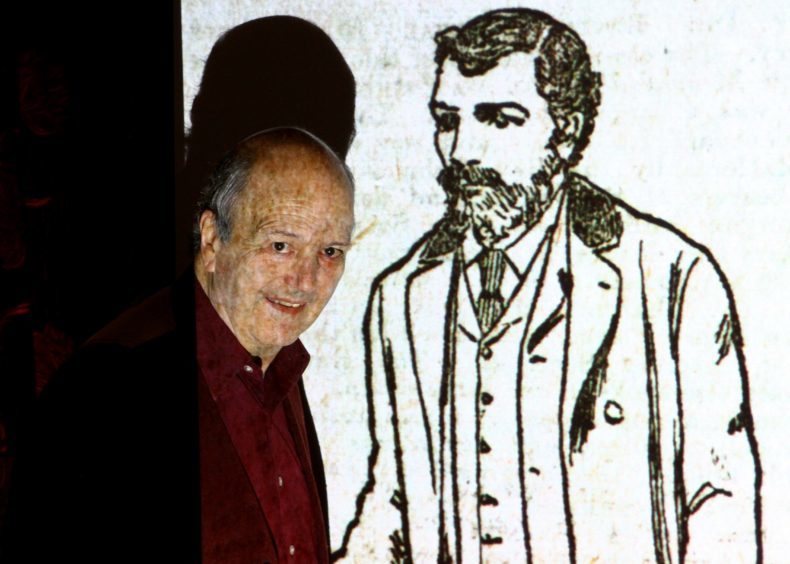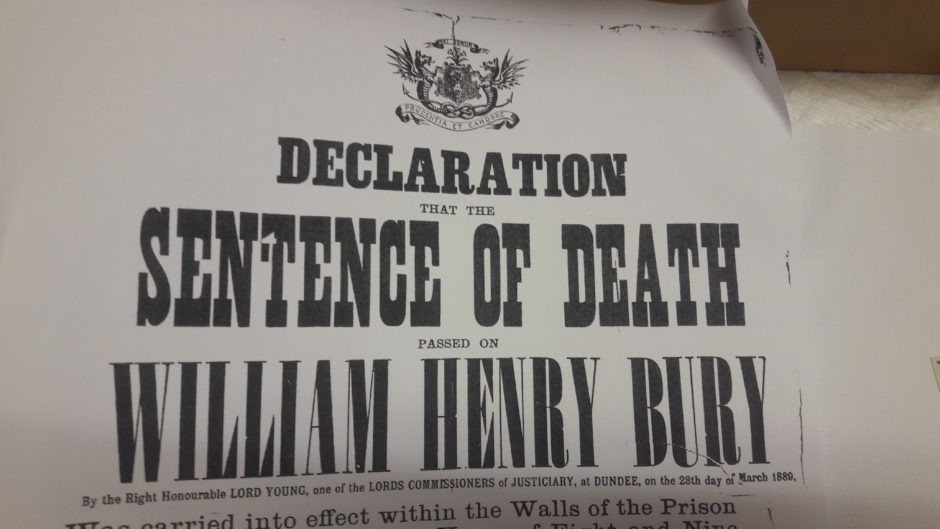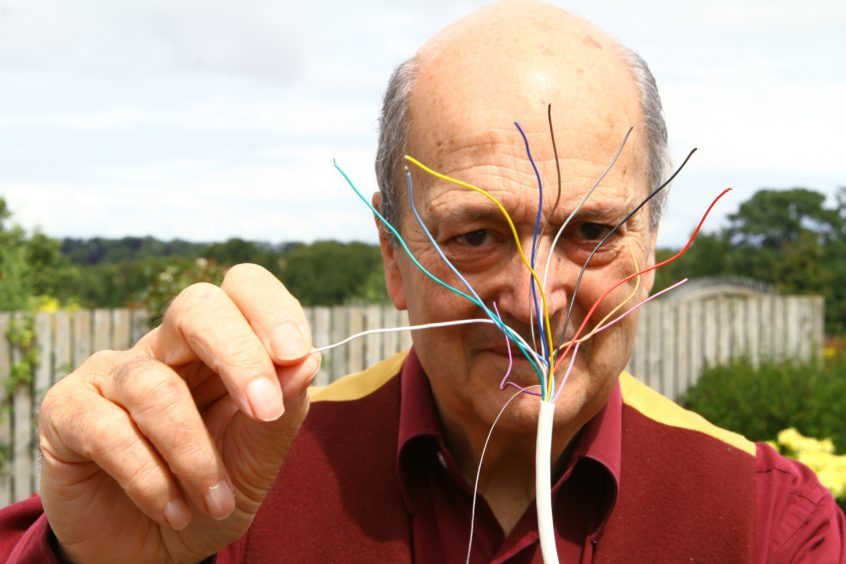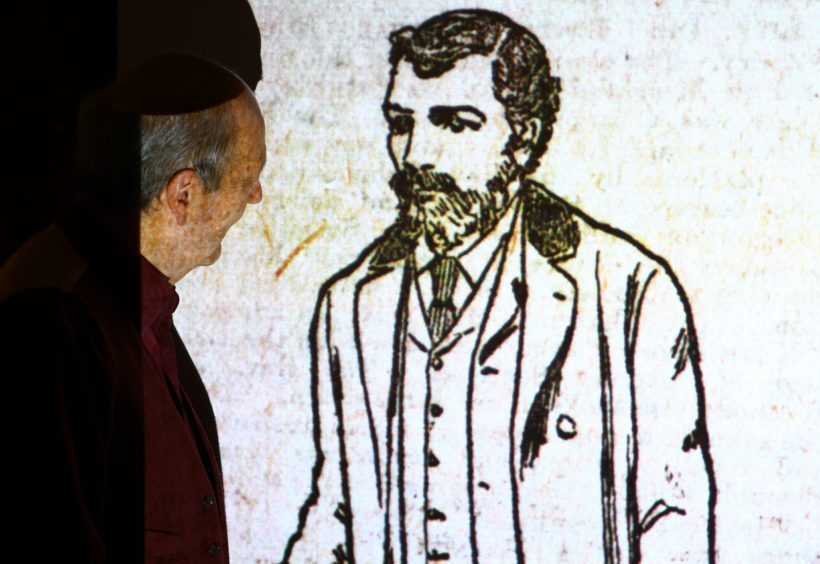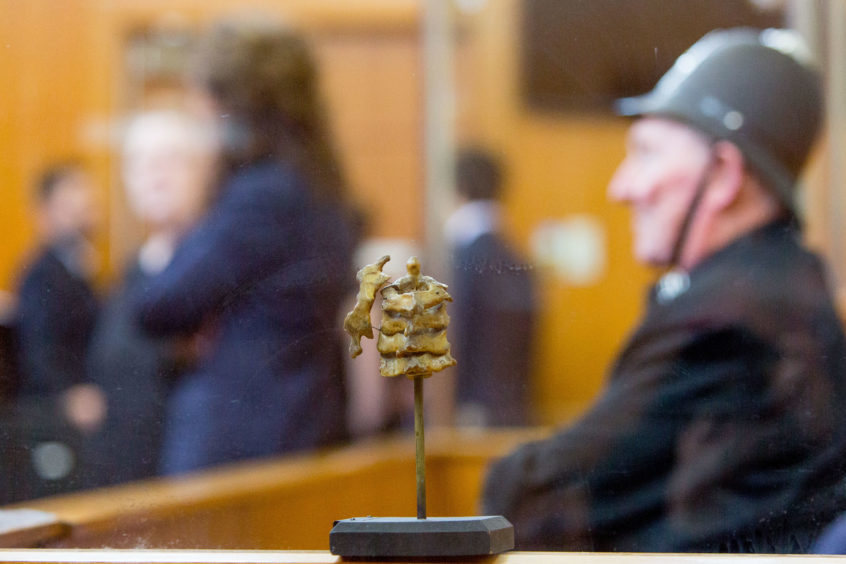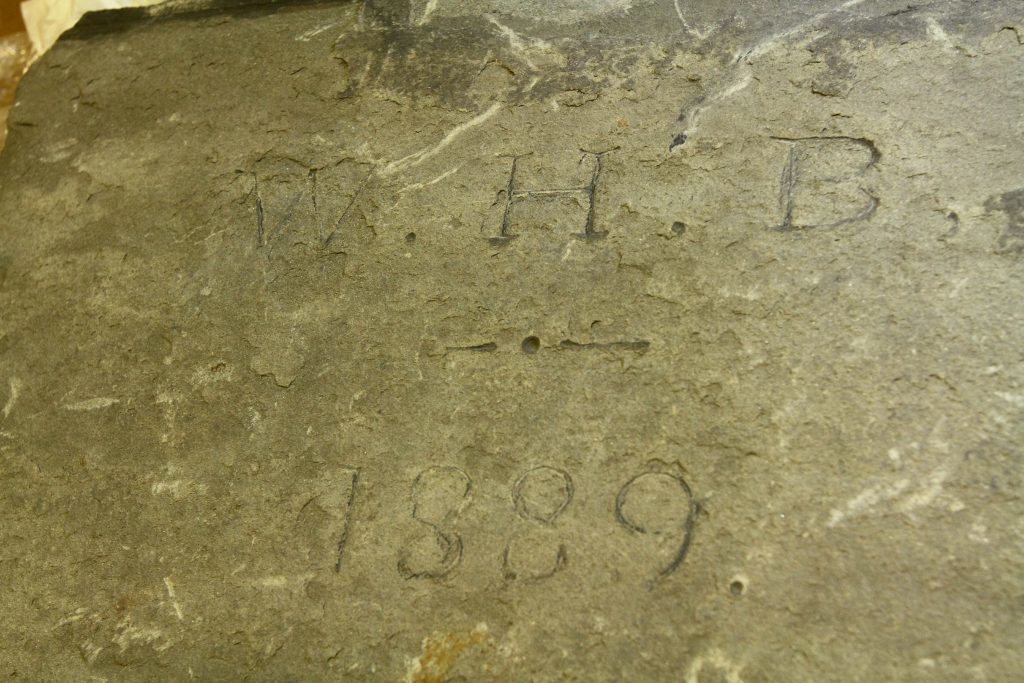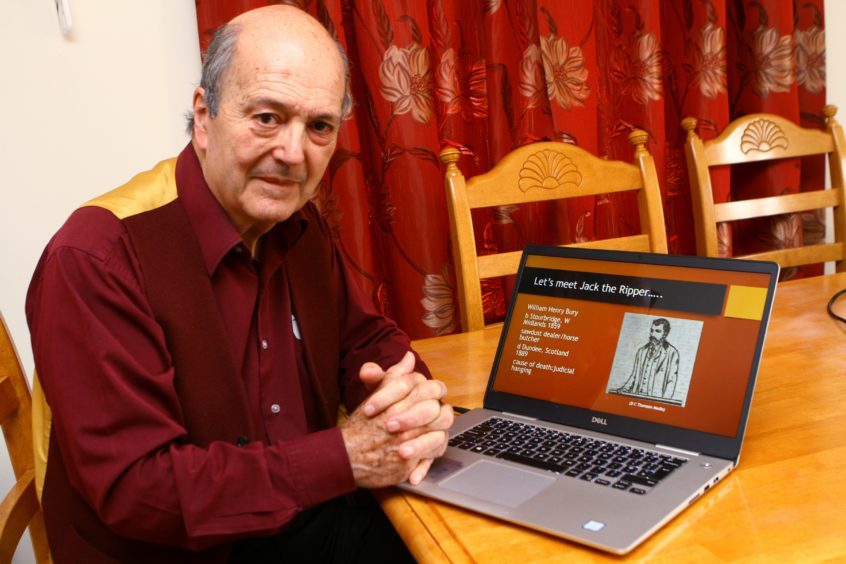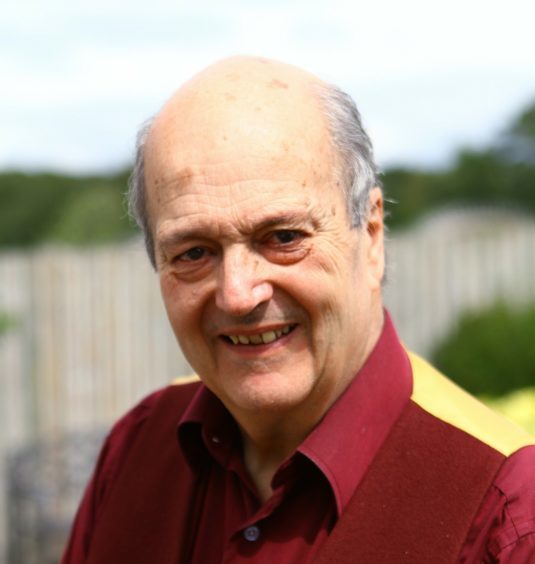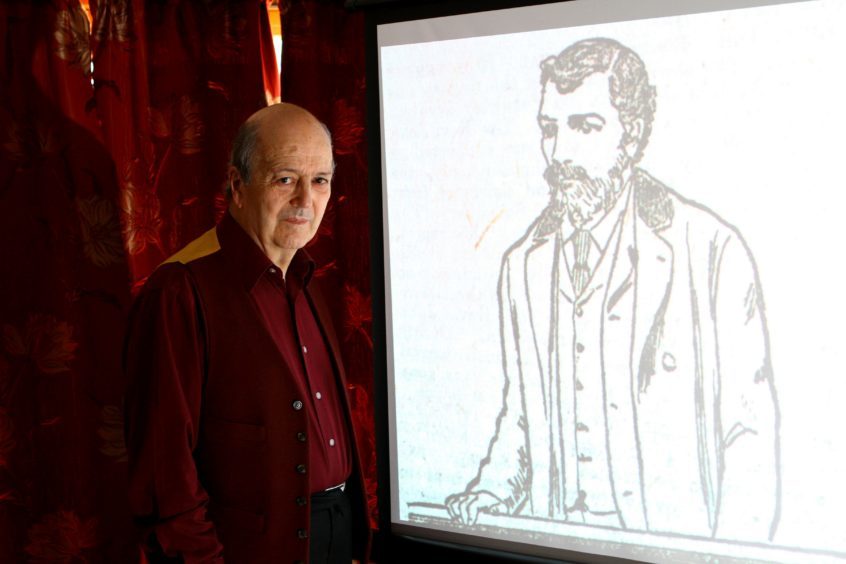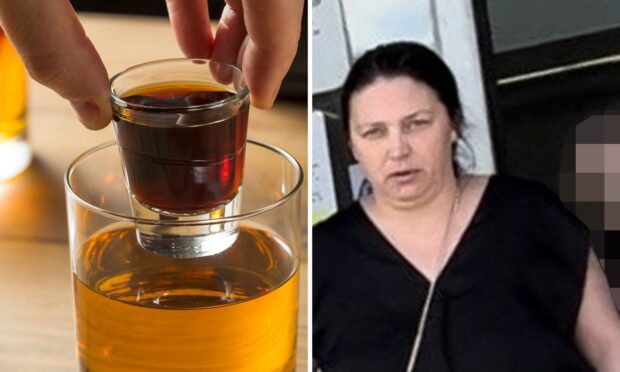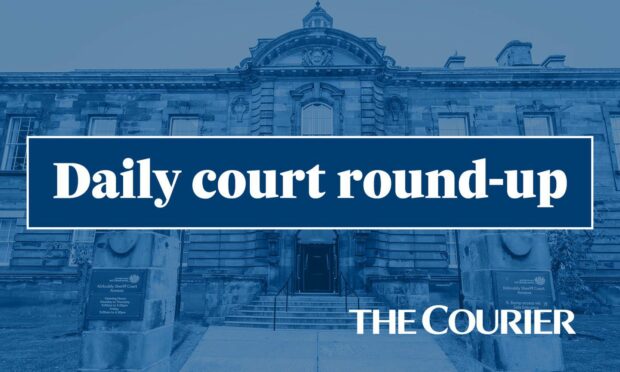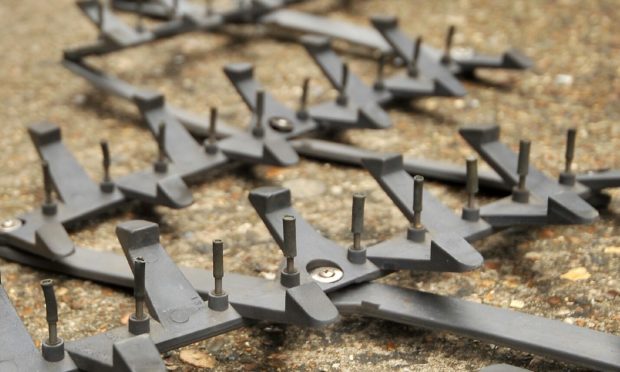Ahead of an event in Kirriemuir, former Dundee-raised investigative journalist Michael Mulford tells Michael Alexander why he believes he now has firm evidence that Jack the Ripper was hanged in Dundee.
He is the wife killer who was hanged for strangling and mutilating his wife Ellen Elliot in Dundee in 1889.
But was William Henry Bury – famously the last man to be hanged in Dundee – also the notorious serial killer Jack the Ripper?
Dundee-raised investigative journalist Michael Mulford thinks so.
After years of speculation by so-called experts and years of research by Michael, he claims to have used the laws of evidence beyond reasonable doubt to prove that not only did Mr Bury kill Ellen, he was also the man responsible for six brutal “Ripper” murders in the Whitechapel area of London during 1888, before fleeing to Dundee.
He has received the endorsement of two high profile figures from Scotland’s legal profession – Mark Stewart QC, defence counsel and former senior advocate depute, who described Michael’s evidence as a “classic circumstantial case which like a cable is strengthened with the addition of each individual strand as they are woven together”, and Len Murray –the last surviving Scottish lawyer who defended clients in capital murder cases- who says Michael has finally solved the case “not just beyond reasonable doubt but beyond all doubt”.
Now Michael, 72, will present his evidence –‘The People Versus Jack the Ripper’- in the old court room at the Gateway to the Glens Museum in Kirriemuir next Wednesday September 26.
The 30-strong members of the invite-only ‘jury’ are mainly retired police officers who will be asked to give their verdict after hearing the evidence and a discussion will follow. Proceeds will go to charity.
>> Keep up to date with the latest news with The Courier newsletter
The suggestion that William Bury was Jack the Ripper is well documented – and Michael is happy to acknowledge he’s not the first person to consider that Jack the Ripper was hanged in Dundee.
But the former Rockwell Primary and Harris Academy pupil, who first heard about the possible connection from police contacts while working as the crime reporter with The Courier newspaper in 1967, said it was only since retiring as RAF Public Relations Officer for Scotland in 2012 that he’s had the time to investigate properly.
The former STV investigative journalist went back to source material – sifting through thousands of documents in the National Records of Scotland archive including long-forgotten precognition interviews from William Bury’s trial as well as newspaper reports from the time held at Dundee’s Central Library.
He was intrigued by evidence that after being hanged in Dundee, rather than being immediately placed in a coffin of quick lime and buried in unconsecrated ground, Mr Bury was first taken to University College Dundee for dissection at a time when the Ripper inquiries in London were on going.
Some of Bury’s neck bones were kept in a cupboard belonging to world renowned anthropologist Professor Dame Sue Black, formerly of Dundee University, along with a cutting from the Weekly News in 1927 – the memoirs of Bury’s hangman who wrote extensively about it.
The hangman had told of two officers from Scotland Yard investigating the Ripper being present on the day of Bury’s hanging and wanting to know if he made any confessions.
One of them told executioner James Berry they had no doubt he had hanged Jack the Ripper. The officers had hoped for a gallows confession from Bury. They got none.
Michael uncovered evidence showing that William Bury created a fake contract of employment to get him from Whitechapel to Dundee – simply because it was “getting too hot” for him to stay in London after the murders there.
Official police precognitions gathered ahead of his Dundee trial also recall his encounters with the “no nonsense women” of Princes Street, Dundee, who made the potential connection between Bury, the Ripper and his former residence.
The precognitions also detail how days before Ellen died in dubious circumstances – the body with broken limbs and hidden in a box – Bury went pale when a drinking pal mentioned the Jack the Ripper killings.
That evening he went to Bell Street Police Office and tried to fool detectives that Ellen had strangled herself but blurted out he “got frightened he would be apprehended as Jack the Ripper.”
Michael believes this was a “classic mistake of guilty knowledge”.
Further investigating FBI profile research from the 1980s which highlighted the Ripper’s hatred of prostitutes, Michael also provides evidence that Bury’s experience of being a horse butcher may have helped him mutilate the victims.
“The FBI profile is so close in detail they might as well have named Bury as Jack the Ripper,” says Michael.
Michael also consulted Leicester-based consultant forensic pathologist and expert approved court witness Dr Stuart Hamilton who concluded that based on the “unique signature” of the crimes, the same person murdered the six Ripper prostitutes as did murder Ellen.
Michael also suggests that Ellen – herself a former brothel worker – knew he was Jack the Ripper and she paid the ultimate price.
At trial on March 28 1889, Bury claimed his wife had strangled herself and he’d panicked.
It didn’t wash, and the jury took only 25 minutes to come back with a verdict of guilty but with a recommendation for mercy.
The judge sent the jury away until they could come back with a clear-cut verdict. They did — a simple guilty.
The guilty verdict in 1889 is at odds with the unofficial “acquittal” of his crime after new forensic evidence was presented to a modern-day mock jury sitting at Dundee Sheriff Court earlier this year. Michael wonders if the jury this year was actually told that between conviction and execution Bury confessed in writing to the murder of his wife and authorised its publication.
